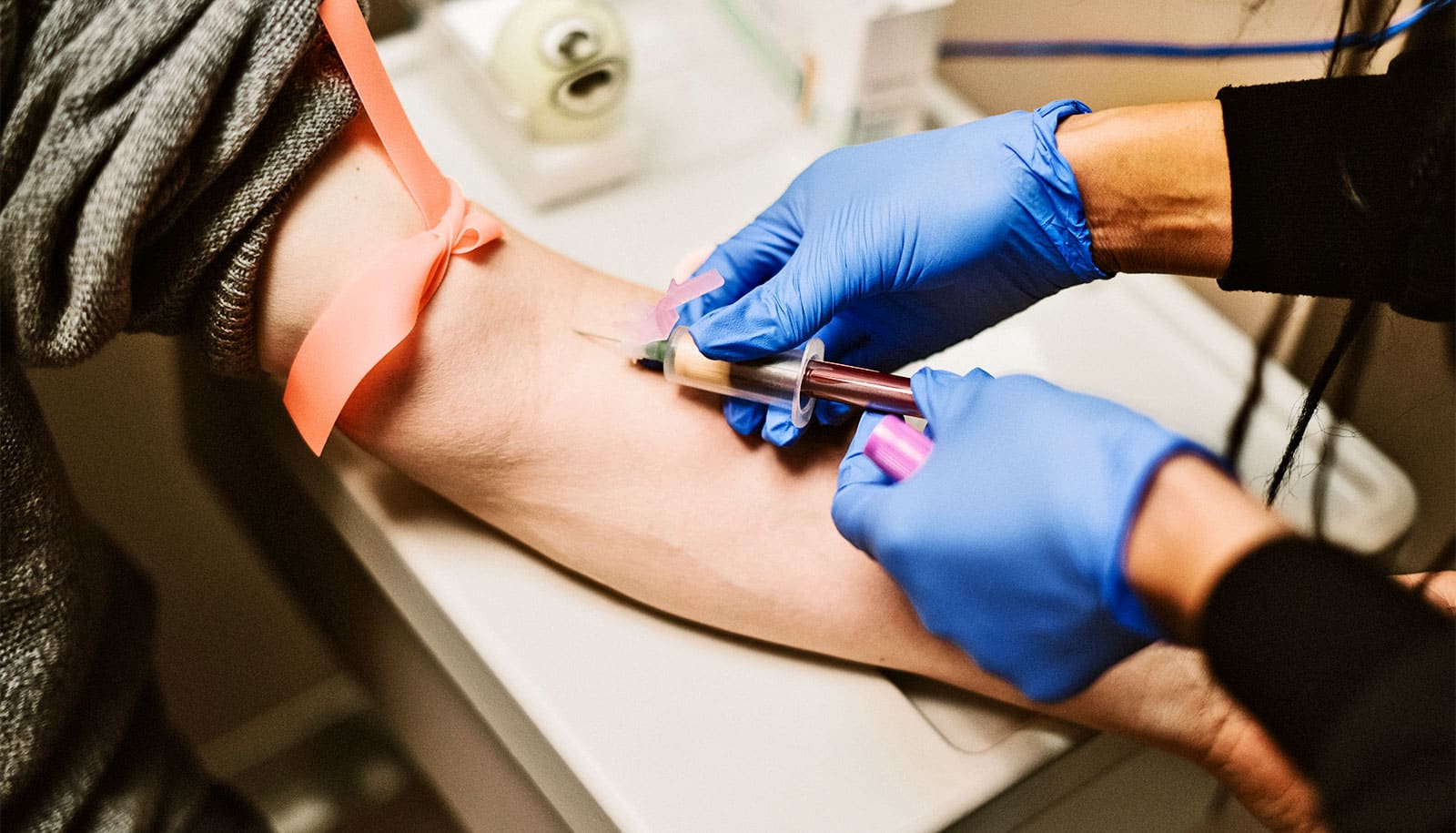A new blood test detects Parkinson’s disease, potentially establishing a way to diagnose the condition before nervous system damage worsens.
The new blood-based diagnostic test would be a major advancement for Parkinson’s disease, which afflicts 10 million people worldwide and is the second-most common neurodegenerative disease after Alzheimer’s.
“Currently, Parkinson’s disease is diagnosed largely based on clinical symptoms after significant neurological damage has already occurred,” says senior study author Laurie Sanders, an associate professor in the Duke University School of Medicine’s departments of neurology and pathology and member of the Duke Center for Neurodegeneration and Neurotherapeutics.
“A simple blood test would allow us to diagnose the disease earlier and start therapies sooner,” Sanders says. “Additionally, a clear-cut diagnosis would accurately identify patients who could participate in drug studies, leading to the development of better treatments and potentially even cures.”
As a biomarker for their diagnostic tool, Sanders and colleagues focused on DNA damage in the mitochondria. Mitochondria are factories within cells that convert raw energy into a form that powers cells. They contain their own DNA, which can undergo damage separately from the nuclear DNA that encodes most of an organism’s genome.
Earlier studies have associated mitochondrial DNA damage with an increased risk of Parkinson’s disease, and the researchers had previously reported an accumulation of mitochondrial DNA damage specifically in the brain tissue of deceased Parkinson’s patients.
Using polymerase chain reaction (PCR) technology, the researchers developed an assay that successfully quantified higher levels of mitochondrial DNA damage in blood cells collected from patients with Parkinson’s disease compared to people without the disease.
The new test also identified high levels of the damaged DNA in the blood samples of people who harbor the genetic mutation LRRK2, which has been associated with an increased risk of the disease. The assay was able to detect Parkinson’s disease patients with and without LRRK2 mutations.
A further analysis in cells from patients with Parkinson’s disease explored whether the team’s PCR-based test could determine the impact of a therapy targeting the effects associated with LRRK2 mutation.
In these samples, the test identified lower mitochondrial DNA damage in cells treated with a LRRK2 inhibitor compared to samples from patients who did not receive the inhibitor. This suggests the assay could help pinpoint Parkinson’s disease patients who might benefit from LRRK2 kinase inhibitor treatments, even if they do not have the LRRK2 mutation.
“Our hope is that this assay could not only diagnose Parkinson’s disease, but also identify drugs that reverse or halt mitochondrial DNA damage and the disease process,” Sanders says. “This disease takes a terrible toll on people, and we are still just treating the symptoms. It’s important to get new, effective treatments over the finish line.”
The researchers’ future will include further testing of the assay in samples from patients with the earliest stages of disease, before symptoms develop.
The study, published in Science Translational Medicine, received support in part from the Michael J. Fox Foundation for Parkinson’s Research; the Mitochondria, Aging & Metabolism Seed Grant Program; the William N. & Bernice E. Bumpus Foundation; the Pepper Center at the University of Pittsburgh; the Medical Research Council; the Chief Scientist Office Senior Clinical Academic Fellowship; the National Health and Medical Research Council of Australia Leadership Fellowship; Busch Biomedical Research; and the National Institutes of Health.
Source: Duke University



